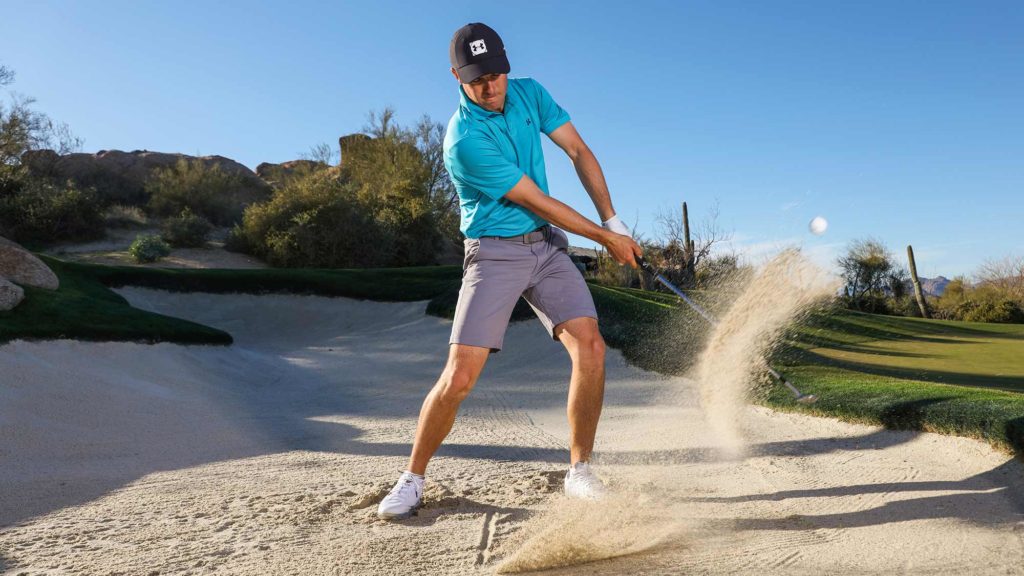Three was to raise your game.
Confidence comes when you’re looking forward to what happens next, not thinking about what came before. To get some of that in your game, I’m going to help you with three important shots – off the tee with the driver, from a basic greenside bunker and on the green. When you have more control over the clubface, a better impact point in the sand and a clear visual of the best line for your putts, you’re going to shoot lower scores.
Let’s start with your tee game. If you want to keep your drives in play, focus on the position of your lead wrist at impact. You can see here [above] that the back of mine is flat and facing my target. If you wear a watch, think about rotating it in the downswing until the face is pointing at the target as the club meets the ball. Do that, and I promise you’ll straighten the curve in your drives. Turn the page for my advice on bunkers and putting.


Clip the sand closer to the ball
Taking classic advice to the extreme, a lot of amateurs strike the sand a few inches behind the ball and end up hitting weak bunker shots with no spin. My contact point is about an inch behind the ball, which gets it to launch and spin much better. It’s just like hitting a flop shot out of the rough. Try this: draw a line in a practice bunker and make swings where you enter the sand right in front of it. Then graduate to hitting shots still focusing on that line – real or imaginary. You’ll soon groove the proper contact point and be able to treat bunker shots like opportunities instead of penalties.

Obsess on the roll, not your putting stroke
With putting, the place you should spend most of your attention is on improving the connection between what you see and what your stroke makes the ball do. Set up a practice station where you determine the ideal combination of line and speed for a breaking putt, and then make a gate with two tees at the apex of the break. Your job is to roll the ball through the gate on its way to the hole – which gets you visualising the entire path of the ball, not just some vague aiming spot. Be sure to vary the putts (and the width of the gate). This type of practice makes your routine more focused on seeing the roll, instead of obsessing about the stroke. For me, that’s an important key to making clutch putts late in tournaments.
Photographs by Walter Iooss Jnr and Ben Walton



